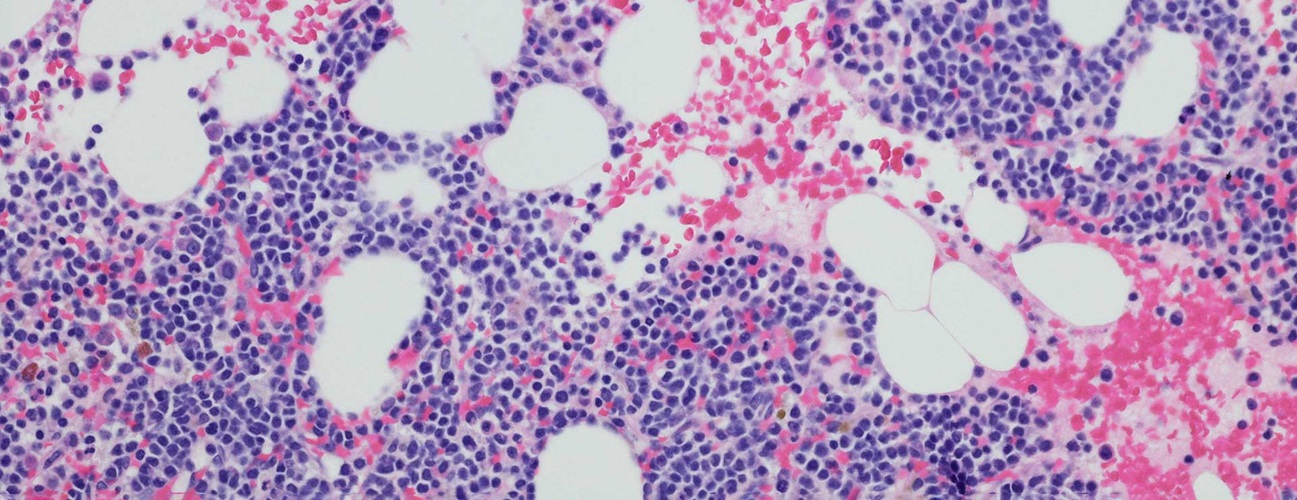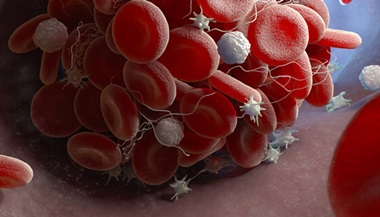Myeloma Bone Disease/Multiple Myeloma
What is multiple myeloma?
Multiple myeloma is cancer that affects certain white blood cells called plasma cells. It represents about 1% of all cancers in the United States, and about 22,000 Americans are diagnosed with it each year.
Plasma cells, and other white blood cells, are part of the immune system. Plasma cells produce antibodies -- immune system proteins that assist the body in ridding itself of harmful substances. Each plasma cell responds to one specific substance by producing one kind of antibody. The body has many types of plasma cells, and, therefore, can respond to many types of substances.
When cancer occurs, the body overproduces plasma cells, which are abnormal and alike. These abnormal plasma cells are called myeloma cells.
Myeloma cells collect in the bone marrow and the outer layer of the bone. Because the cells begin in the blood plasma, myeloma is not a bone cancer, but is cancer that affects bones.
What causes multiple myeloma?
The exact cause of multiple myeloma is not known, but theories and associations have been suggested as risk factors.
What are the risk factors for multiple myeloma?
Suggested risk factors for multiple myeloma include the following:
-
Male gender
-
Age (occurs rarely under the age of 35)
-
Family history
-
Exposure to petroleum and other chemicals
-
Exposure to high amounts of radiation
-
Race (twice as common among African-Americans as white Americans)
-
Being overweight or obese
-
Having a plasma cell disorder known as monoclonal gammopathy of undetermined significance (MGUS). This is considered a precursor to multiple myeloma. It could be compared to a polyp in the colon that may develop into a colon cancer. Only a few people with MGUS develop multiple myeloma in their lifetime.
What are the symptoms of multiple myeloma?
The following are the most common symptoms for multiple myeloma. However, each individual may experience symptoms differently. (Some people with early multiple myeloma have no symptoms. Instead, it is found during routine blood or urine tests.) Myeloma cells and antibodies may cause the following:
-
Bone pain
-
Fractures in bones
-
Weakness
-
Fatigue
-
Weight loss
-
Repeated infections
-
Nausea
-
Vomiting
-
Constipation
-
Problems with urination
-
Weakness or numbness in legs
-
Back pain
-
Rib pain
The symptoms of multiple myeloma may resemble other bone disorders or medical problems. Always consult your doctor for a diagnosis.
How is multiple myeloma diagnosed?
In addition to a complete medical history and physical examination, diagnostic procedures for multiple myeloma may include the following:
-
X-ray. A diagnostic test that uses invisible electromagnetic energy beams to produce images of internal tissues, bones, and organs onto film. Bone scans are used to evaluate for bone involvement with most cancers, but they are unreliable in multiple myeloma.
-
Blood and urine tests. These tests are used to look for proteins or other substances that are more likely to be seen in the blood or urine of people with myeloma.
-
Bone marrow aspiration and/or biopsy. A procedure that involves taking a small amount of bone marrow fluid (aspiration) and/or solid bone marrow tissue (called a core biopsy), usually from the hip bones, to be examined for the number, size, and maturity of blood cells and/or abnormal cells.
-
Skeletal survey. A series of plain X-rays of all of the major bones in the body.
-
Magnetic resonance imaging (MRI). A diagnostic procedure that uses a combination of large magnets, radiofrequencies, and a computer to produce detailed images of organs and structures within the body.
-
Computed tomography scan (also called a CT or CAT scan). A diagnostic imaging procedure that uses a combination of X-rays and computer technology to produce horizontal, or axial, images (often called slices) of the body. A CT scan shows detailed images of any part of the body, including the bones, muscles, fat, and organs. CT scans are more detailed than general X-rays (but often not quite as detailed as MRI scans).
-
Positron emission tomography (PET) scan. Radioactive-tagged glucose (sugar) is injected into the bloodstream. Tissues that use the glucose more than normal tissues (such as tumors) can be detected by a scanning machine. PET scans can be used to find small tumors throughout the body.
Treatment for multiple myeloma
Specific treatment for multiple myeloma will be determined by your doctor based on:
-
Your age, overall health, and medical history
-
Extent of the disease
-
Your tolerance for specific medications, procedures, or therapies
-
Expectations for the course of the disease
-
Your opinion or preference
Treatment may include:
-
Medications to control pain
-
Fracture treatment
-
Medications to prevent fractures
-
Radiation therapy to control pain, prevent fractures, and allow bone lesions to heal
-
Chemotherapy and corticosteroid drugs
-
Biological or targeted therapies, such as Velcade (bortezomib), Thalomid (thalidomide), and Revlimid (lenalidomide)
-
Alpha interferon. A biological response modifier (a substance that stimulates or improves the ability of the body's immune system to fight disease) that interferes with the division of cancer cells, therefore slowing tumor growth. It also seems to prolong remission when given after chemotherapy treatment. Interferons are substances normally produced by the body but can be produced in the laboratory.
-
Bone marrow transplantation or stem cell transplantation. This has been used extensively in multiple myeloma, but newer targeted therapies are making it less appealing due to the high toxicity associated with transplantation




